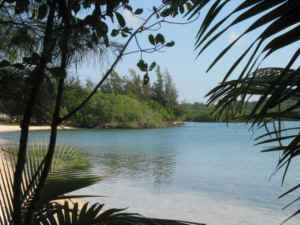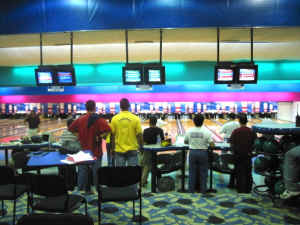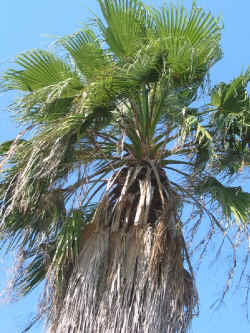| LONDON, ENGLAND, May 22, 2003
– Visitors attending the 2003 AMF Bowling World Cup in Honduras September
27-October 4 will want to sample the wide range of tourist delights this Central
American republic offers.
|
|
|
|
The influence of Spanish settlers is seen in the city’s colonial architecture and urban street layout, particularly in its “zona viva,” or commercial district. Anchored around the Boulevard Morazan (named after one of Central America’s greatest military and political figures, Francisco Morazan), Tegucigalpa’s old business district is a maze of narrow, winding hilly streets braced on all sides by centuries-old, shoulder-to-shoulder stucco buildings. |
|
World
Cup fans will enjoy photographing such classical architecture landmarks as the Parroquia de San Miguel Arcangel (known simply as la Catedral),
the Galeria Nacional de Arte (National Art Gallery) and the exquisite Santuario
de Nuestra Señora de Suyapa, (Basilica of Our Lady of Suyapa, patron saint of
Honduras and the most revered site of Honduran Catholics). A number of museums,
including the Museo del Hombre Hondureño (Museum of the Honduran Man) and the
Museo Nacional de Honduras (National Museum of Honduras) offer visitors a look
at the work of contemporary Honduran artists and Honduran history, respectively. |
|
|
|
In
contrast to the colonial and classical architecture, air passengers landing at
Tegucigalpa’s Toncontin International Airport are greeted by row after row of
modern-day houses, office buildings, hotels and restaurants shingled into the
mountains that surround the Choluteca Valley. Skyscrapers tossed into the mix
include the two headquarters hotels for the 2003 AMF World Cup, the
Intercontinental and the Clarion. Both are just minutes away from Planeta
Sipango; and the city’s largest indoor mall, the Multi Plaza, is across the
street from the Intercontinental. While the mall and hotels offer ample
opportunities for delicious dining, visitors are encouraged to seek out and
sample the many fine independent restaurants in the area boasting ethnic
cuisines, including Japanese, Italian, Uruguayan, Chinese, Argentinean, Spanish,
Mexican and traditional Honduran eateries. |
|
Honduras’
national language is Spanish and its currency is the lempira, named after a
chief of the indigenous Lenca Indian tribe. The exchange rate is approximately
17.50 “lemps” to the U.S. dollar, and ATMs are available throughout
Tegucigalpa. Most require a major bankcard such as VISA or MasterCard for
access. (Ed. note: Money changing at Toncontin Airport is done by independent
moneychangers outside the international arrivals terminal, with the tacit
approval of the local police, and they exchange only U.S. dollars for lemps or
vice versa.) |
|
|
|
Honduras
is more than Tegucigalpa, of course. San Pedro Sula, the country’s financial
capital, is a day’s drive northwest through the mountains or a short flight
away. San Pedro Sula is a gateway city to and from the United States. Many of
the Honduran maquilas, or factories, are within driving range of the city,
making it an important export center. |
|
Copan
Ruinas, a colonial-styled city built around the ancient Mayan Indian ruins
preserved there, is approximately three hours southwest of San Pedro Sula. The
ruins date back to least A.D. 426 and were home to a dynasty that lasted some
400 years. Painstaking excavation has restored or recreated many of the features
of that time. Official tour guides can be hired at the archeological site to
help explain the ruins. A museum with more artifacts sits next door, while a
sprinkling of red parrots, Honduras’ national bird, makes its home in the
carefully tended preserve. |
|
|
|
Hondurans
are rightfully proud of their natural wonders, especially the “cloud
forests” that grow on the mountaintops. The forests are so named because the
high elevation drapes a permanent shroud of fog around them. One cloud forest
within driving distance of the Bowling World Cup is the Parque Nacional de La
Tigra (Tiger National Park), approximately 12 miles northwest of Tegucigalpa. La
Tigra was Honduras’ first protected natural preserve, and it is popular among
hikers and backpackers, thanks to well-laid trails and knowledgeable park
guides. |
|
Like
much of the Honduran mainland, the islands were nearly decimated by Hurricane
Mitch in 1998. Today, their resorts feature breathtaking tropical landscapes for
outdoor activities such as horseback riding, bicycling, boating, snorkeling,
swimming and sunbathing. Deep-sea scuba diving to view the largest coral reef in
the Americas is popular. Many resorts, such as Fantasy Island on Roatan, offer a
full program of diving activities, including lessons and night dives. |
|
|
|
The
AMF Bowling World Cup is the world’s largest annual international sports
championship in terms of number of participating nations, More than 90 nations
are expected to send their male and female national champions to compete in the
weeklong tournament, recognized as one of the premier events in international
amateur bowling. The 2003 edition marks the first time the Bowling World Cup has
been staged in a Central American/Caribbean nation. |









